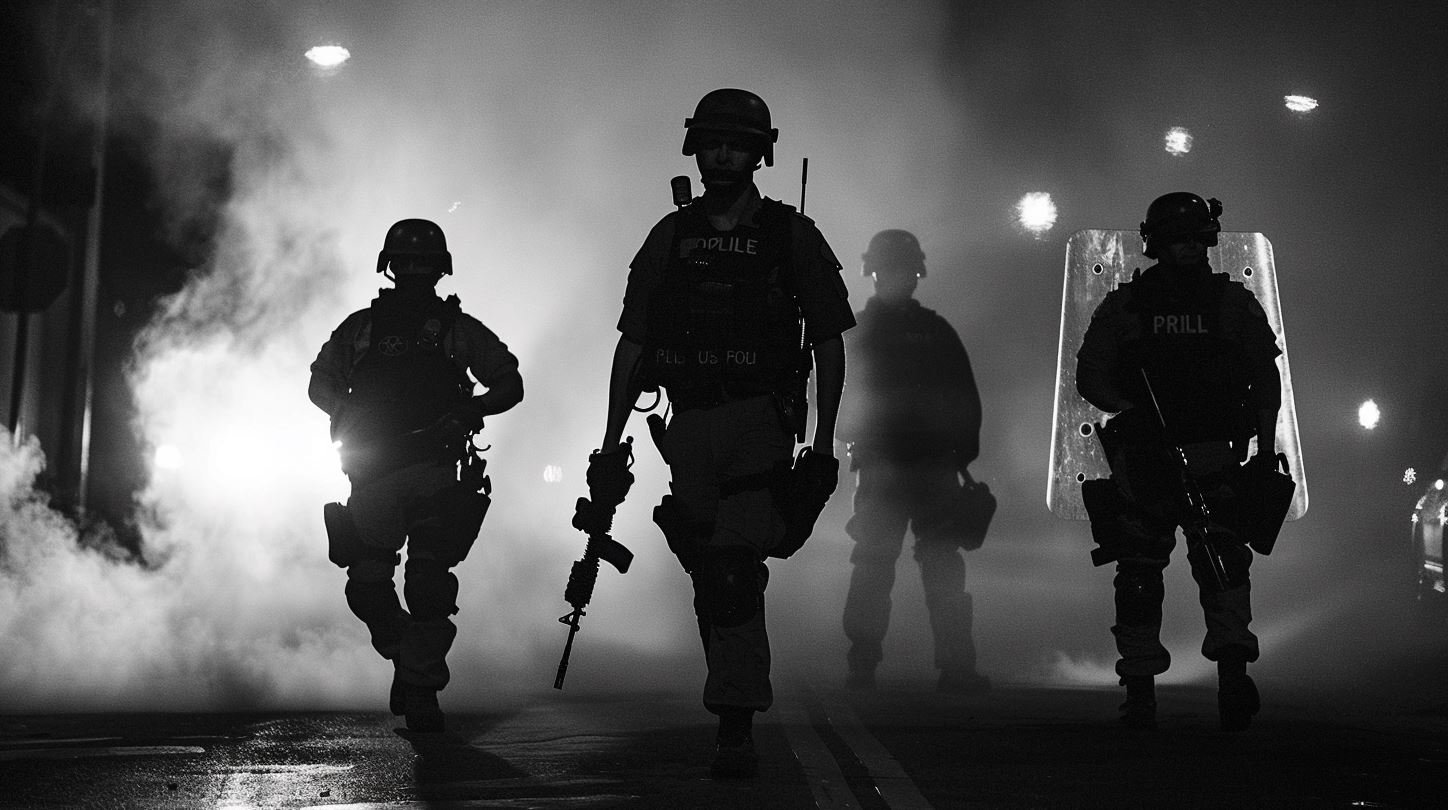Examples of Police Use of Force
Unveiling the Dynamics of Police Use of Force: Insights, Implications, and Pathways to Reform
Police use of force is a complex and controversial aspect of law enforcement that attracts significant attention and scrutiny.
While officers are trained to prioritize de-escalation and non-violent tactics, there are occasions when the use of force becomes necessary to maintain public safety and enforce the law.
In this comprehensive guide, we'll examine examples of police use of force, explore the policies and research behind these practices, and discuss real-world scenarios to provide insight into this critical aspect of policing.
Related Questions
-
Police officers may use various levels of force to gain compliance, overcome resistance, or protect themselves and others from harm.
These levels typically range from verbal commands and presence, to hands-on tactics, less-lethal weapons, and ultimately, deadly force.
The appropriate level of force used by officers depends on the specific circumstances and the level of threat encountered.
-
The most common type of force used by police officers involves physical force, which includes tactics such as grabbing, pushing, restraining, or striking individuals to gain control or subdue resistance.
Physical force is often employed in situations where verbal commands and other de-escalation techniques have been unsuccessful in gaining compliance.
-
Examples of physical force used by police officers may include:
Grabbing or restraining a suspect during an arrest.
Using joint manipulation techniques to control resistant individuals.
Employing strikes or baton strikes to subdue aggressive subjects.
Engaging in physical altercations with combative individuals.
Utilizing takedowns or ground control techniques to immobilize suspects.
It's important to note that the use of physical force by police officers should be proportionate to the level of resistance encountered and guided by departmental policies and training protocols.
Examples of Police Use of Force:
Tennessee v. Garner (1985): This landmark Supreme Court case centered on the use of deadly force by police. It established that law enforcement officers cannot use deadly force to prevent the escape of a fleeing suspect unless the officer has probable cause to believe that the suspect poses a significant threat of death or serious physical injury to the officer or others.
Rodney King Incident (1991): The beating of Rodney King by Los Angeles police officers, captured on video, sparked nationwide outrage and led to significant reforms in law enforcement practices. The incident highlighted concerns about excessive force and police brutality, prompting calls for greater accountability and oversight in policing.
Michael Brown Shooting (2014): The shooting of Michael Brown, an unarmed black teenager, by a white police officer in Ferguson, Missouri, ignited protests and renewed discussions about racial bias and use of force in law enforcement. The incident underscored the need for improved police-community relations and enhanced training in de-escalation techniques.
George Floyd Killing (2020): The killing of George Floyd, an unarmed black man, by a white police officer in Minneapolis, Minnesota, galvanized global protests against police brutality and systemic racism. Floyd's death prompted calls for sweeping reforms in policing, including changes to use of force policies, accountability measures, and racial equity initiatives.
Understanding Police Use of Force Policies:
Police departments across the United States have established policies and guidelines governing the use of force by officers.
These policies outline the circumstances under which force may be used, the types of force permitted, and the principles of de-escalation and proportionality.
For example, departments typically authorize officers to use force when they perceive an imminent threat of death or serious bodily harm to themselves or others.
Additionally, policies emphasize the importance of using the minimum amount of force necessary to achieve a lawful objective and avoiding tactics that may escalate conflicts unnecessarily.
Research on Police Use of Force:
Scholars and researchers have conducted numerous studies to better understand the prevalence, patterns, and outcomes of police use of force.
These studies examine factors such as the demographics of individuals involved, the types of force used, and the impact of community policing initiatives on reducing the use of force.
Research also explores the relationship between police use of force and factors such as officer training, organizational culture, and community trust.
By analyzing data and trends, researchers aim to identify strategies for minimizing the use of force while ensuring public safety and officer effectiveness.
Real-World Examples:
To illustrate the complexities of police use of force, let's consider a few real-world scenarios:
Armed Suspect Encounter: In a situation where an armed suspect refuses to comply with police commands and poses an immediate threat to officers or bystanders, officers may be justified in using deadly force to neutralize the threat and protect lives.
Mental Health Crisis Intervention: When responding to a call involving an individual experiencing a mental health crisis, officers are trained to use de-escalation techniques, verbal communication, and crisis intervention tactics to resolve the situation peacefully.
However, if the individual becomes violent or poses a danger to themselves or others, officers may need to use force, such as physical restraint or less-lethal weapons, to ensure safety.
Protest or Civil Unrest: During protests or civil unrest, law enforcement may encounter situations where crowds become unruly or violent, posing a threat to public safety or property. In such cases, officers may use force, including crowd control tactics, dispersal orders, and less-lethal munitions, to restore order and protect the community.
Learn More:
Community Policing Strategies: Explore community policing approaches that prioritize collaboration, problem-solving, and trust-building between law enforcement agencies and the communities they serve. Community policing initiatives aim to reduce the need for force by addressing underlying social issues and fostering positive relationships with residents.
Crisis Intervention Training (CIT): Learn about Crisis Intervention Training programs designed to equip officers with the skills and knowledge to effectively respond to individuals experiencing mental health crises. CIT emphasizes de-escalation techniques, empathy, and collaboration with mental health professionals to ensure safe and appropriate outcomes.
Police Accountability Mechanisms: Investigate mechanisms for promoting accountability and transparency in law enforcement, such as civilian oversight boards, body-worn cameras, and independent review agencies. These accountability measures serve to hold officers accountable for misconduct and build public trust in policing.
Implicit Bias Training: Examine the role of implicit bias in police interactions and learn about training programs aimed at mitigating biases and promoting fair and impartial policing. Implicit bias training helps officers recognize and address unconscious biases that may influence their perceptions and behaviors during encounters with community members.
Conclusion:
Police use of force is a multifaceted issue that requires careful consideration of policies, research findings, and real-world dynamics.
While officers are entrusted with the authority to use force when necessary, they must do so responsibly, ethically, and following established guidelines.
By promoting transparency, accountability, and ongoing training, law enforcement agencies can strive to minimize the use of force while upholding public safety and trust.











Inside the Investigation: A Deeper Dive into Police Detective Benefits